Mineralogy is an active science in which minerals are discovered or recognised on a regular basis. Use of old mineral names is also discontinued, for example when a name is no longer considered valid. Therefore, a list of recognised mineral species is never complete. Minerals are distinguished by various chemical and physical properties. Differences in chemical composition and crystal structure distinguish the various species. Within a mineral species there may be variation in physical properties or minor amounts of impurities that are recognized by mineralogists or wider society as a mineral variety. The International Mineralogical Association (IMA) is the international group that recognises new minerals and new mineral names. However, minerals discovered before 1959 did not go through the official naming procedure. Some minerals published previously have been either confirmed or discredited since that date. This list contains a mixture of mineral names that have been approved since 1959 and those mineral names believed to still refer to valid mineral species (these are called "grandfathered" species). Presently, each year about 90-110 new mineral species (the sum of all mutations c. 120/year) are officially approved by the Commission on New Minerals, Nomenclature and Classification (CNMNC) of the International Mineralogical Association. The IMA/CNMNC administrates c. 6,500 names, and (As of January 2018), the Handbook of Mineralogy lists 4,507 species. (As of March 2018), the IMA Database of Mineral Properties/ Rruff Project lists 5,312 valid species (IMA/CNMNC) of a total of 5,525 minerals. There are 1,289 Pre-IMA minerals. (As of April 2011), the Webmineral.com website lists 2,722 published and approved (IMA/CNMNC) minerals, 81 discredited minerals (IMA/CNMNC status; Michael Fleischer discredited around thousand species in his lifetime), 2,691 synonyms and 123 "not approved" names. (As of November 2018), the IMA - CNMNC Master List of Minerals lists 5,413 valid minerals, including c. 1,166 pre-IMA minerals (grandfathered), c. 272 approved minerals but without a published description yet and c. 99 questionable minerals. Due to the length of this list, it is divided into alphabetical groups. The minerals are sorted by name.
- classification
- physical properties
- new mineral species
1. Clockwork
- The name of a new mineral is an IMA secret until it is approved or until its full description is published, its authors' option (approved decision: 'IMA2009-D').[1] The IMA uses a code for its own procedures for the supposed new mineral (and so it is a synonym). Ferri-ottoliniite's proposal was assigned code 'IMA2001-067', it was redefined and approved as 'IMA2001-067a' in 2003, for instance (the ottoliniite root name is discredited since 2012).[2]
- Current IMA regulations do not allow substances of anthropogenic origin (burning coal mine dumps, coal mine fires, slag, etc.) to be validated as a mineral species. Since 1998, the majority of polymorphs (especially polytypes and polytypoids) are not regarded as separate mineral species anymore.[3]
- IMA/CNMNC identifiers are usually written without space, as years don't get meaningful hits on Google search.
- "The System of Mineralogy of James Dwight Dana and Edward Salisbury Dana" (8 ed.) was the reference of CNMNC/CNMMN's (IMA) initial work. At the Kobe 2006 general meeting, the IMA council endorsed the creation of an Internet site on minerals ('rruff.info/ima'). So a Master List was needed and the older minerals were reviewed in a document of 130 pages. The final GQN List was published (grandfathered, questionable and published without approval) after a final review of Burke E A J and Nickel E H (approved decision: 'IMA2006-C'). Not only the well established minerals before 1959 was grandfathered (G), but the minerals that could not be discredited as well. The merging of the 'ARD List' (approved, revalidated and discredited) with the 'GQN List' resulted in the first 'IMA/CNMNC List of Mineral Names'. The 2007 draft of the 'IMA/CNMNC List of Mineral Names' was a courtesy of the Materials Data, Inc. (MDI), its 2009 review had important modifications.[4][5] The RRUFF database was built with the help of the MDI's 2007 draft, the IMA Master List is an update of the MDI's 2009 review.[6][7][8] Some grandfathered minerals had their status changed to approved afterwards, based on IMA approved reports. Note: the list of approved minerals was revised with 'The New IMA List of Minerals (September 2012)'.[9]
- The IMA was founded in a meeting in Madrid (1958). The CNMMN (now CNMNC) was one of the original eight commissions, it was founded in 1959. Not all grandfathered mineral were first described prior to 1959. Hatrurite, a phase in cement clinker (alite, C3S), was first described in 1977, for instance.[10]
- Some mineral names were revised; this changed their first letters. Sodium-pharmacosiderite is now natropharmacosiderite, natroapophyllite is now fluorapophyllite-(Na), for instance.[11][12][13][14][15][16][17] But 2010, hydroxylapatite, fluorapatite, fluorellestadite and chlorapatite had their old names reinstated.[18]
- Everything is slower on earth sciences, geology, mineralogy:
- Georgius Agricola's De re metallica libri xii though apparently finished in 1550, was published 1556 (the author died 1555).
- Some IMA/CNMNC (1959–2000) approved minerals had their complete description published only 2012: 'IMA1998-018' (fluornatromicrolite, published 2011), 'IMA1987-046a' (ferrolaueite, published 2012), 'IMA1978-064' (approval probably based on fake data), 'IMA1977-006' (whelanite, published 2012) and 'IMA1968-003' (discredited, 'IMA2008-B'). 'IMA1995-025' was listed as well, a mistake (natroglaucocerinite, published 1995).[19]
- The paper of Armbruster et al. (2006) misunderstood the naming rules and renamed a well established mineral name (hancockite).[20] Hatert et al. (2013) modified the naming rules.[21] and proposal IMA2015 s.p. was accepted, reverting the renaming.[22]
- Sample: bergenite was discredited as a barium bearing mineral variety of phosphuranylite (IMA1962 s.p., special procedure). So phosphuranylite was already a valid mineral, and it is listed in the Michael Fleischer's mineral list (1966).[23] Both are listed as grandfathered minerals as they are not listed in the 'ARD List' (approved, revalidated and discredited minerals; 2004).[24][25]
- The review and approval of new mineral is straight forward most of the time, but there are exceptions. Proposal IMA2009-096 was not accepted, proposal IMA2009-096a was approved as fontarnauite (6.DA.60) in 2014. Proposal IMA1995-020 was not accepted, proposal IMA1995-020c was approved as jarandolite (6.CB.25).[24]
- Every year some valid names get discredited (in the broader sense).
- Tohdite (hydrous alumina) was conditionally approved as 'IMA2004-051'. But the re-examination of the holotype material of akdalaite ((Al2O3)5·H2O, 'IMA1969-002') from the Fersman Mineralogical Museum in Moscow showed that both minerals were identical (space group was corrected).[26]
- Tellurocanfieldite was conditionally approved as 'IMA2012-013'. Its approval was withdrawn as further studies showed it to be a Te-rich variety of canfieldite (Y: 1894, 2.BA.70).[27]
- Some old minerals were known before their 20th century names were first published.
2. Curiosities
- Current regulations do not allow a new mineral name to honour a person a second time. But there are exceptions: Jöns Jakob Berzelius (1779–1848) (berzelianite, berzeliite and berzeline (now haüyne)); Pierre Berthier (1782–1861) (berthierine and berthierite); Andor von Semsey (1833–1923) (andorite IV, andorite VI and semseyite); Brian Harold Mason (1917–2009) (brianite and stenhuggarite); Caleb Wroe Wolfe (1908–1980) (wolfeite and wroewolfeite) and Leo Neal Yedlin (1908–1977) (yedlinite and nealite). The regulation does not affect mineral series and other variations (prefix iso, hexa, ortho, tetra, clino, meta, para, pseudo etc.). For instance: Karl Hugo Strunz (1910–2006) (strunzite group); George P. Merrill (1854–1929) (merrillite series, whitlockite group); Edward S. Grew (Ph.D. 1971) (edgrewite series, humite group).
- Standard temperature and pressure (STP).
- Silicate perovskites, argentite and β-quartz are not valid minerals, as they do not occur on Earth's surface (STP). The type material of bridgmanite is from a meteorite. Some minerals are unstable on Earth's surface (metastability): diamonds, cohenite and haxonite, for instance. Acanthite var. argentite (a pseudomorph after argentite) and β-quartz pseudomorphs are sometimes sold.[28]
- Ramdohr (1936) discovered that the type material of schapbachite (Ag0.4Pb0.2Bi0.4S) was a mixture of galena (PbS) and matildite (AgBiS2).[29] It was discredited (1982) as it was found unstable at 'standard temperature and pressure' (STP).[30] It was revalidated (2004) as Pb-bearing schabachite is stable at STP.[31] The type locality is not Schapbach now, but Silberbrünnle mine, Gengenbach; both Black Forest localities.
- Epsilon iron, hexagonal close-packed (HCP) phase of iron is stable only at extremely high pressure. It can be found as a mineral (chemical formula: (Fe,Os,Ru,Ir)).
- It is not only schapbachite that had a longer controversy. Other minerals have a complicated history, as well.
- Imogolite, 9.ED.20, was first published 1962.[32][33] Its formal discreditation by the IMA was published 1967, as its description was incomplete.[34] The IMA referred it to the AIPEA (Association Internationale Pour l'Étude des Argiles) for advice and it was approved by the AIPEA (Nomenclature Committee) at its Tokyo meeting (1970).[35][36] Fleischer (1983) described it as a variety of allophane and it was finally redefined and approved by the IMA/CNMNC 1986.[37][38]
- Amorphous allophane, nanotube-like imogolite (Al2SiO3(OH)4), halloysite-10Å (Al2Si2O5(OH)4·2H2O), halloysite-7Å (Al2Si2O5(OH)4) and gibbsite (Al(OH)3) are thought to be products of tuff weathering.
- Betalommosovite was described by Gerasimovskiy and Kazakova (1962) and discredited by the IMA-CNMMN (IMA1967 s.p.). It was published without approval and listed as discredited on the 'IMA/CNMNC List of Mineral Names' (2009). Later, betalomonosovite was revalidated (IMA2014-J).[39][40]
- Jichengite as xinghuaite (IMA1984-047) was rejected by the IMA-CNMMN. Jichengite (IMA1994-039) was rejected by the IMA-CNMMN, as well. Unfortunately, it was published without approval in 2011.[41][42]
- UM1991-//-COF:BaCaCe (IMA1989-012), a calcium analogue of cordylite-(Ce) from Bayan Obo mine, had the approval procedure suspended by Joseph A. Mandarino, because of the cerium dominant cordylite (IMA2000-C).[43]
- Imogolite, 9.ED.20, was first published 1962.[32][33] Its formal discreditation by the IMA was published 1967, as its description was incomplete.[34] The IMA referred it to the AIPEA (Association Internationale Pour l'Étude des Argiles) for advice and it was approved by the AIPEA (Nomenclature Committee) at its Tokyo meeting (1970).[35][36] Fleischer (1983) described it as a variety of allophane and it was finally redefined and approved by the IMA/CNMNC 1986.[37][38]
- Other curiosities:
- Niggliite (former 1.AG.60, year: 1938), sorosite (former 1.AC.15, IMA1994-047), yuanjiangite (former 1.AC.15, IMA1993-028) are not classified as tin alloys (PGE-metal alloys and indium-tin family) in Fleischer's Glossary. But, they are stannide minerals (nickeline mineral group), sulfide mineral class there.[44][45]
- Tiragalloite (9.BJ.25, IMA1969-061, Mn42+(HAsSi3O13)), is an arsenosilicate and grenmarite (9.BE.25, IMA2003-024, (Na,Ca)4(Mn,Na)(Zr,Mn)2(Zr,Ti)(Si2O7)2(O,F)4) is a zirconium silicate (analogous to the more common aluminosilicates, borosilicates and titanium silicates).[46][47]
- Mostly anthropogenic minerals: abhurite (3.DA.30), lausenite (7.CB.70), guildite (7.DC.30), hoelite (10.CA.15), calclacite (10.AA.25).
- Studtite (4.GA.15, year: 1947) is the first peroxide mineral, the facies radioactivity generate peroxide.
- Ianthinite (4.GA.10, year: 1926), U(IV) is one of the constituents of the mineral), it gets a layer of schoepite/ metaschoepite in the presence of oxygen.
- Polyoxometalates:
- Menezesite (4.FN.05, IMA2005-023) and aspedamite (IMA2011-056), are the only natural heteropolyniobates known.
- Ophirite (IMA2013-017) is a mineral with a heteropolytungstate tri-lacunary keggin anion.
- Melcherite (IMA2015-018) and peterandresenite (IMA2012-084) have a lindqvist anion.
- Inosilicate, biopyriboles:
- Jimthompsonite (IMA1977-011) is a triple chain inosilicate.
- Chesterite (IMA1977-010) is a connected double chain inosilicate.
- Inosilicate, double dreier chains:
- Xonotlite (Y: 1866) is an inosilicate with double dreier chains.
- Chivruaiite (IMA2004-052) is an inosilicate double dreier chains of (SiO4) tetrahedra.
- Zorite (IMA1972-011) is an inosilicate double dreier chains of (SiO4) tetrahedra.
- Haineaultite (IMA1997-015) is an inosilicate double dreier chains of (SiO4) tetrahedra.
- Other inosilicates:
- Veblenite (IMA2010-050) has a veblenite ribbon (Si8O22).
- Yangite (IMA2012-052) is an inosilicate with two-connected double chain.
- Yegorovite (IMA2008-033) is an inosilicate with single zig-zag chains of Si tetrahedra.
- Icosahedrite (IMA2010-042), the only natural quasicrystal known.
- Comancheite (IMA2013-B/ IMA1980-077, former 3.DD.65) is a mercury nitride mineral now.
- α-Sulfur (old); chemical formula unit with 1 atom; unit cell with 128 formula units (Z).
- Whitecapsite (IMA2012-030), chemical formula: H16Fe2+5Fe3+14Sb3+6(AsO4)18O16·120H2O; unit cell with 1 formula unit (Z).
- Megacyclite (9.CP.10, IMA1991-015); chemical formula unit with 111 atoms; unit cell with 4 formula units (Z).
- Labyrinthite (9.CO.10, IMA2002-065); chemical formula unit with 278.5 atoms; unit cell with 3 formula units (Z).
- Ashcroftine-(Y) (9.DN.15, year: 1933); chemical formula unit with 180 atoms; unit cell with 4 formula units (Z).
3. Notes
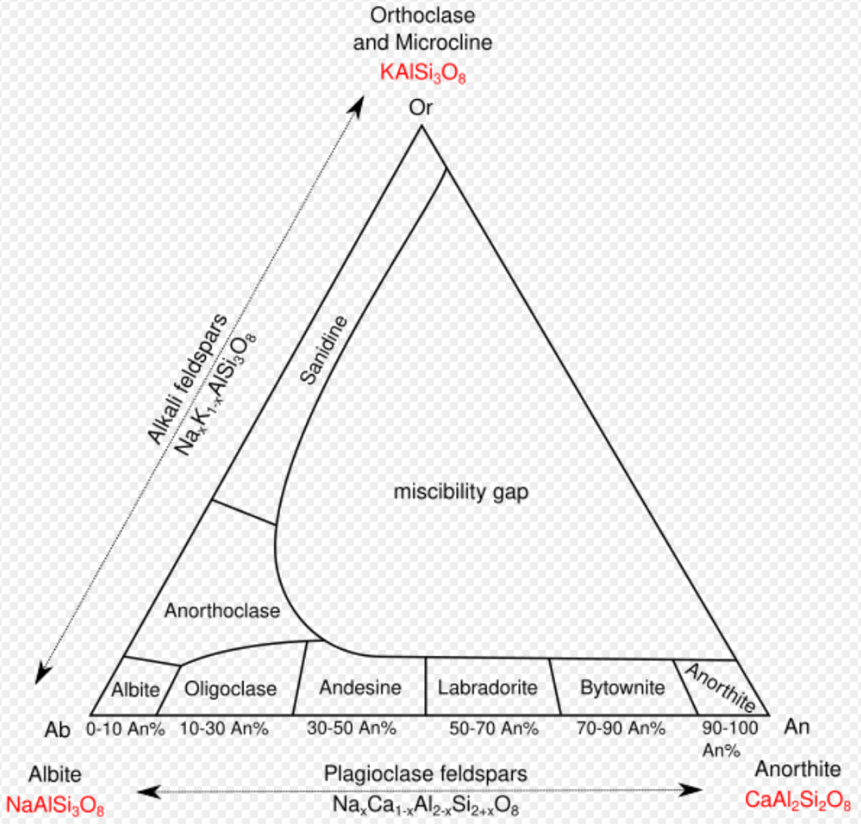
- Attention with the amphiboles: some mineral names have been redefined (IMA2012 s.p. was the last revision), some even more than once; i.e. their chemical formula range changed.[2] For example, aluminotaramite ('IMA2006-023', 9.DE.20) is a synonym of ferro-taramite, sodic-ferri-ferropedrizite (IMA2003 s.p., 9.DE.25) was renamed to ferro-ferri-pedrizite, ehimeite is a synonym of chromio-pargasite ('IMA2011-023', 9.DE.15), kôzulite is a synonym of mangano-arfvedsonite ('IMA1968-028', 9.DE.25) and kornite is a synonym of potassic-mangani-leakeite ('IMA1992-032', 9.DE.25).
- Some IMA-CNMNC approved minerals have a questionable status on mineralienatlas.de, but their unit cell parameters are given on mindat.org (or vice versa). Their status here doesn't change, it remains 'approved mineral'.
- The mineral systematic given on Nickel-Strunz (9 and 10 ed) is not controversial. Dmisteinbergite (feldspar, 9.EG.15), uranyl sorovanadates (4.HD. ids) and silica family (4.DA. ids) are some exceptions, for instance.
- Great care must be taken with definitions and their redefinitions. There is a difference between rocks, natural minerals and chemical compounds. Some examples: rocksalt (a redirect), halite and sodium chloride; kaolin earth (a redirect) and kaolinite; apatite, strict sense (chlorapatite, fluorapatite and hydroxylapatite), apatite group and apatite supergroup; kaolinite-serpentine group (alias serpentine), serpentine subgroup, serpentinization and serpentinite; olivine structural group (after rruff.nfo/ima); olivine group and olivine (a fosterite var.); spessartine (a garnet) and spessartite (a lamprophyre); iron (element), telluric iron (alias native iron) and meteoric iron; phyllosilicate minerals (alias sheet silicates) and clays; pyrochlore (invalid mineral name since 2010), pyrochlore group and pyrochlore supergroup; antimony and stibnite (alias antimonite); etc.
- The data of a mineral on the databases is similar but not equal. For instance:
- Opal is a valid IMA/CNMNC name but it is a mineraloid (a mixture of cristobalite and/or tridymite and amorphous silica), it has a page on Mindat.org and Webmineral.com but not on the Handbook of Mineralogy.
- Ice, mercury (low melting point); allophane, delvauxite, hisingerite (amorphous/ poorly cristalline); actinolite, augite, omphacite, sanidine (intermediate member of a solid solution series) are IMA/CNMNC valid names too. The reasons can be inherited pre-IMA status, practical reasons or entrenchment in the literature, including medical and legal usage.
- OligoclaseI is an albite variety on Mindat.org and it has pages on the Handbook of Minerals and Webmineral.com, see 'List of minerals (synonyms)' (plagioclase/albite-anorthite series). It is not the only intermediate member of a solid solution series with a page on the Handbook of Mineralogy (mineral varieties).
- The Handbook of Mineralogy has pages on clinochrysotile, orthochrysotile and parachrysotile, but not on chrysotile; but they are polytypes of chrysotile, see 'List of minerals (synonyms)'.
- Mindat.org uses to give the chemical formula of some minerals as a range (between parentheses, if tin dominant then herzenbergite: (Sn,Pb)SnS2; otherwise teallite: (Pb,Sn)SnS2), on the other side the IMA Database of Mineral Properties/ Rruff Project uses to give the ideal chemical formula of the solid solution end member (herzenbergite: SnS).
- The given chemical names are a compromise for information purposes, being based on the Nickel-Strunz code too. Most of the time the chemical formula on rruff.info was used, sometimes the simpler one on mindat.org. To illustrate it: bartonite, K3Fe10S14 (mindat.org), K6Fe20S26S (rruff.info); bayleyite, Mg2(UO2)(CO3)3·18H2O (mindat.org), Mg2(UO2)(CO3)3(H2O)12·6H2O (rruff.info) and bredigite, Ca7Mg(SiO4)4 (mindat.org), CaCa13Mg2(SiO4)8 (rruff.info).
- Caution with the chemical formula units of silicates and their "formula masses". Some molecules have a repeating unit, these might be chains, networks, polymers, and so the true molecule might be a multiple of the smallest repeating unit (the unit cell of a crystal is formed by repeating 'Z' times the chemical formula). Examples: wadsleyite (Mg2SiO4) a sorosilicate and high pressure polymorth of forsterite and ringwoodite; leucophanite (NaCaBeSi2O6F), but it has Nickel-Strunz identifier 9.DH.05 (inosilicates with 4-periodic single chains, Si4O12); clinoenstatite (MgSiO3), but it has Nickel-Strunz identifier 9.DA.10 (inosilicates with 2-periodic single chains, Si2O6); scolecite (CaAl2Si3O10·3H2O), but it has Nickel-Strunz identifier 9.GA.05 (zeolites with T5O10 units – the fibrous zeolites); mogánite (SiO2), but it has Nickel-Strunz identifier 4.DA.20 (oxides with small cations: silica family).
- Opal is a valid IMA/CNMNC name but it is a mineraloid (a mixture of cristobalite and/or tridymite and amorphous silica), it has a page on Mindat.org and Webmineral.com but not on the Handbook of Mineralogy.
- The existence in nature of some questionable/ doubtful minerals is very unlikely at all or at the type locality. For example, chloromagnesiteQ (Y: 1872, MgCl2) 3.AB.20 and zinkositeQ (Y: 1852, ZnSO4) 7.AB.10.[49][50]
- Some names are not names of minerals anymore, but names of a group of minerals:
- Micas, biotite group.[51][52][53]
- The IMA/CNMMN, Subcommittee on Nomenclature of the Micas (1998, 1999) has recommended that the name biotite be used for a series including phlogopite, siderophyllite, annite and eastonite.[54]
- Zeolites: chabazite group,;[55][56][57] dachiardite group,;[58][59][60] heulandite group.[61][62][63]
- Pyrochlore supergroup:
- Micas, biotite group.[51][52][53]
4. Nomenclature Dictionary
- Native elements (class 1): carbides, silicides, nitrides, phosphides, elements, alloys, amalgams
- Special minerals (strict sense): tellurium(VI) oxysalts ([Te6+Ox], trioxotellurate(IV) tetraoxotellurate(VI) [Te4+O3][Te6+O4])
- Sulfide class (class 2): sulfides [S], selenides [Se], tellurides [Te], arsenides [As], antimonides [Sb], bismuthides [Bi], sulfantimonides [SbxSy], sulfarsenides [AsxSy], sulfbismuthides [BixSy], sulfastannides [SnxSy], plumboarsenide [As,Pb], plumbobismuthide [Bi,Pb]
- Oxide class (class 4): sulfites(IV) [SO3]2−, selenites(IV) [SeO3]2−, iodates [IO3], trioxotellurate(IV) [Te4+O3]2−, dihydroxotellurate(IV) [Te4+O(OH)2], pentaoxoditellurate(IV) [(Te4+)2O5]2−, vanadyl anion [V4+O2]2-
- Halide class (class 3): fluoride [F], chloride [Cl], bromide [Br], iodide [I], tetrafluoroborates [BF4], hexafluorosilicates [SiF6], hexachlorothallate(III) [Tl3+Cl6]
- Carbonate and nitrate class (class 5): carbonates [CO3], bicarbonate [HCO3]
- Nitrates (subclass 5.N): nitrates [NO3]
- Borate class (class 6): metaborates [B2O4], trioxoborate [BO3], tetrahydroborate [B(OH)4]
- Sulfate class (class 7), monomeric minerals: sulfates [SO4]2−, tungstates [WO4]2−, niobates [NbO4]2−, molybdates [MoO4]2−, chromates [CrO4]2−, tetraoxotantalate [TaO4], thiosulphates [SO3S]2−
- Phosphate class (class 8), monomeric minerals: phosphates(V) [PO4]3−, arsenates(V) [AsO4]3−, vanadates(V) [VO4]3−, hydroxophosphates(V) [PO3OH]2−, dihydroxophosphates(V) [PO2(OH)2], hydroxoarsenates(V) [AsO3OH]2−, dihydroxoarsenates(V) [AsO2(OH)2]
- Nesosilicates (subclass 9.A), monomeric minerals: tetraoxosilicate [SiO4], hydrotrioxosilicate [SiO3OH]
- Sorosilicates (subclass 9.B): heptaoxodisilicate [Si2O7], hydrohexaoxodisilicate [Si2O6OH], tetraoxosilicate heptaoxodisilicate [SiO4][Si2O7], decaoxotrisilicate [Si3O10], undecaoxotetrasilicate [Si4O11]
- Inosilicates (subclass 9.D):
- Single-chain inosilicates: pyroxenes
- Double-chain inosilicates: amphiboles
- Other inosilicates:
- Cyclosilicates (subclass 9.C):
- Phyllosilicates (subclass 9.E):
- Tridimensional silicate frameworks: tectosilicates (subclass 9.F)
- Silica family (class 4, family DA): dioxosilicate [SiO2]
- Tectosilicates, zeolites (subclass 9.G):
- Dimeric and polymeric minerals, phosphate and sulfate class: polyphosphates, polyoxometalates, hexaniobates [Nb6O19], pyrophosphates [P2O7], pyroarsenates [As2O7], decavanadates [V10O28]
- Organic minerals, salts of organic acids (class 10, division A): oxalates, citrates, acetates, formiate
- Cations: divalent [dimercury] [Hg2]2+, uranyl [U6+O2]2+, ammonium [NH4]+, tetramethylammonium [N(CH3)4]+
- Other building blocks: stannide alloys [Sn], aluminide alloys [Al], aluminosilicates, borosilicates, aluminoborosilicates, paddlewheel cluster [e.g.: uranyl-tricarbonate cluster (UO2)(CO3)3]
5. Gallery
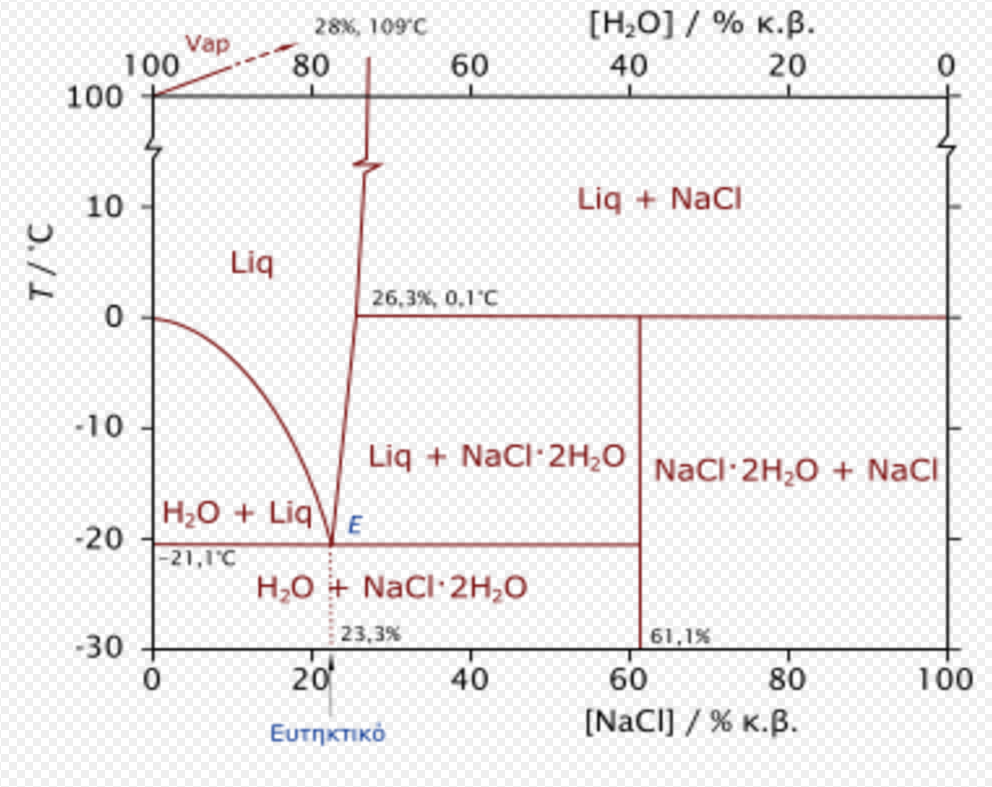
Halite/ hydrohalite phase diagram
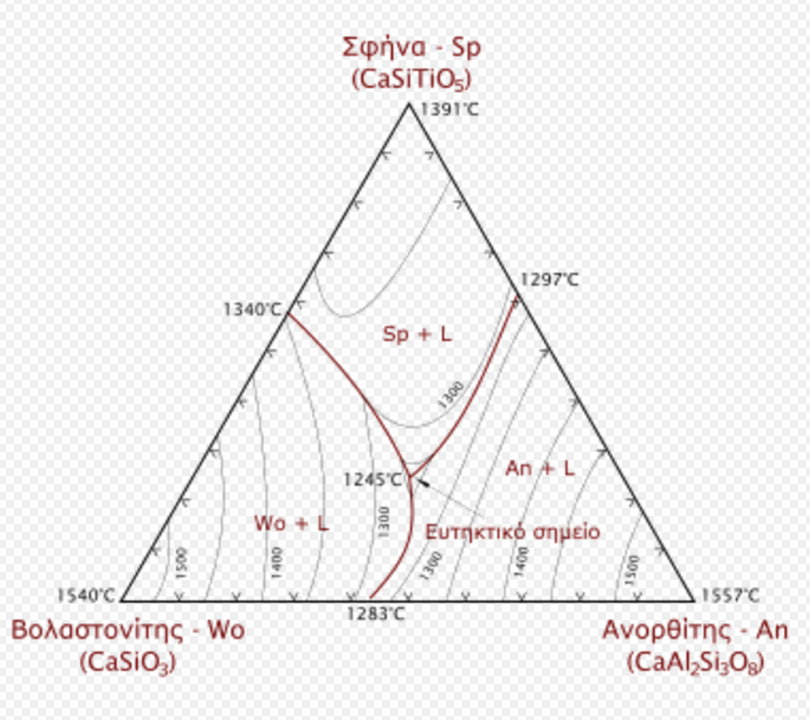
Ternary phase diagram: anorthite (CaAl2Si2O8), wollastonite (CaSiO3) and titanite (CaTiSiO5)
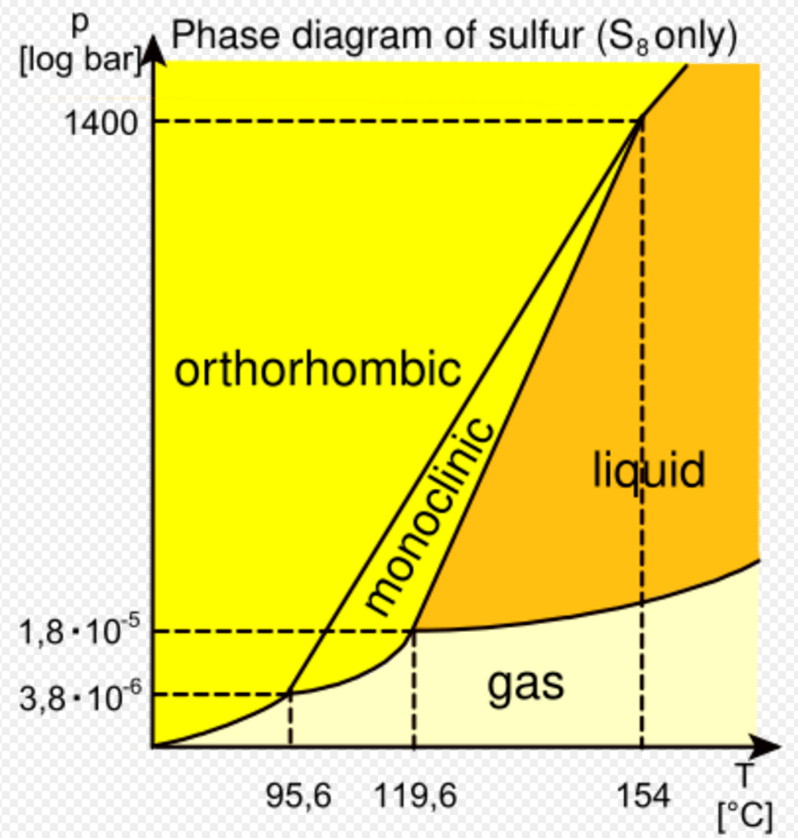
Sulfur/ β-sulfur diagram, rosickyite turns slowly to α-sulfur at room temperature
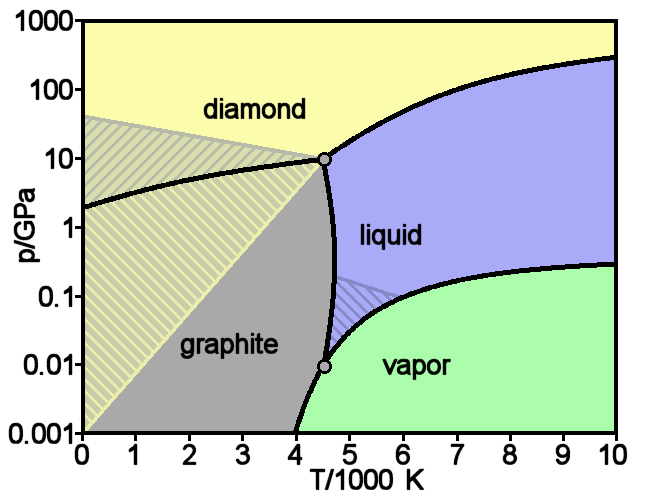
Theoretically predicted phase diagram of carbon

Biotite series (micas)
The content is sourced from: https://handwiki.org/wiki/Earth:List_of_minerals_(complete)
References
- "Minerals approved in 2010". IMA/ CNMNC. http://pubsites.uws.edu.au/ima-cnmnc/newminerals2010.pdf. Retrieved 10 March 2012.
- Frank C. Hawthorne, Roberta Oberti, George E. Harlow, Walter V. Maresch, Robert F. Martin, John C. Schumacher, Mark D. Welch (2012). "Nomenclature of the amphibole supergroup". American Mineralogist 97 (11–12): 2031–2048. doi:10.2138/am.2012.4276. https://dx.doi.org/10.2138%2Fam.2012.4276
- Nickel, Ernest H.; Grice, Joel D. (1998). "The IMA Commission on New Minerals and Mineral Names: Procedures and Guidelines on Mineral Nomenclature, 1998". The Canadian Mineralogist 36. http://pubsites.uws.edu.au/ima-cnmnc/cnmmn98.pdf.
- Nickel E H, Nichols M C (2007). IMA/CNMNC List of Mineral Names : draft. Materials Data, Inc.. http://rruff.info/rruff_1.0/uploads/MINERALlist.pdf.
- Nickel E H, Nichols M C (2009). IMA/CNMNC List of Mineral Names. Materials Data, Inc.. http://pubsites.uws.edu.au/ima-cnmnc/IMA2009-01%20UPDATE%20160309.pdf.
- "IMA Mineral List". RRUFF Database. http://rruff.info/about/about_IMA_list.php.
- Burke E A J (2006). "A mass discreditation of GQN minerals". The Canadian Mineralogist 44 (6): 1557–1560. doi:10.2113/gscanmin.44.6.1557. https://dx.doi.org/10.2113%2Fgscanmin.44.6.1557
- de Fourestier, Jeffrey (2002). "The Naming of Mineral Species Approved by the Commission on New Minerals and Mineral Names of the International Mineralogical Association: A Brief History". The Canadian Mineralogist 40 (6): 1721–1735. doi:10.2113/gscanmin.40.6.1721. https://dx.doi.org/10.2113%2Fgscanmin.40.6.1721
- "The New IMA List of Minerals (September 2012)". IMA-CNMNC. http://nrmima.nrm.se//IMA_Master_List_(2012-09).pdf.
- MinDat - Hatrurite http://www.mindat.org/min-1828.html
- Levinson A A (1966). "A system of nomenclature for rare-earth minerals". American Mineralogist 51: 152–158.
- Nickel, E H; Mandarino, J A (1987). "Procedures involving the IMA Commission on New Minerals and Mineral Names and guidelines on mineral nomenclature". American Mineralogist 72: 1031–1042.
- Burke E A J (2008). "Tidying up mineral names: an IMA-CNMNC scheme for suffixes, hyphens and diacritical marks". The Mineralogical Record 39: 131–135. http://pubsites.uws.edu.au/ima-cnmnc/tidyingupnames.pdf.
- Armbruster, Thomas (2002). "Revised nomenclature of högbomite, nigerite, and taafeite minerals". European Journal of Mineralogy 14 (2): 389–395. doi:10.1127/0935-1221/2002/0014-0389. http://www.krist.unibe.ch/pdf/2002/hognomen.pdf.
- Bindi, L; Evain M; Spry P G; Menchetti S (2007). "The pearceite-polybasite group of minerals: crystal chemistry and new nomenclature rules". American Mineralogist 92 (5–6): 918–925. doi:10.2138/am.2007.2440. https://dx.doi.org/10.2138%2Fam.2007.2440
- Darrell J. Henry; Milan Novák; Frank C. Hawthorne; Andreas Ertl; Barbara L. Dutrow; Pavel Uher; Federico Pezzotta (2011). "Nomenclature of the tourmaline-supergroup minerals". American Mineralogist 96 (5–6): 895–913. doi:10.2138/am.2011.3636. http://pubsites.uws.edu.au/ima-cnmnc/henry%20et%20al%202011%20tourmaline%20tomenclature.pdf.
- Frédéric Hatert, Stuart J. Mills, Marco Pasero and Peter A. Williams (2013). "CNMNC guidelines for the use of suffixes and prefixes in mineral nomenclature, and for the preservation of historical names". European Journal of Mineralogy 25: 113–115. doi:10.1127/0935-1221/2013/0025-2267. http://pubsites.uws.edu.au/ima-cnmnc/Hatert%20et%20al%20CNMNC%20guidelines%20for%20suffixes%20(2).pdf.
- "Nomenclature of the apatite supergroup minerals". European Journal of Mineralogy 22 (2): 163–179. 2010. doi:10.1127/0935-1221/2010/0022-2022. https://dx.doi.org/10.1127%2F0935-1221%2F2010%2F0022-2022
- "Missing Minerals". Elements 3: 360. 2007. http://pubsites.uws.edu.au/ima-cnmnc/missingminerals.doc.
- "Recommended nomenclature of epidote-group minerals". European Journal of Mineralogy 18 (5): 551–567. 2006. doi:10.1127/0935-1221/2006/0018-0551. https://dx.doi.org/10.1127%2F0935-1221%2F2006%2F0018-0551
- Hatert F, Mills S J, Pasero M, Williams P A (2013). "CNMNC guidelines for the use of suffixes and prefixes in mineral nomenclature, and for the preservation of historical names". European Journal of Mineralogy 25: 113–115. doi:10.1127/0935-1221/2013/0025-2267. https://dx.doi.org/10.1127%2F0935-1221%2F2013%2F0025-2267
- Hålenius U, Hatert F, Pasero M, Mills S J (2015). "IMA Commission on New Minerals, Nomenclature and Classification (CNMNC) Newsletter 26. New minerals and nomenclature modifications approved in 2015". Mineralogical Magazine 79 (4): 941–947. doi:10.1180/minmag.2015.079.4.05. https://dx.doi.org/10.1180%2Fminmag.2015.079.4.05
- Michael Fleischer (August 1966). "Index of New Mineral Names, Discredited Minerals, and Changes of Mineralogical Nomenclature in Volumes 1-50 of The American Mineralogist". American Mineralogist (8): 1247–1336.
- "Master List of IMA-approved minerals (May 2015)". IMA-CNMNC. http://nrmima.nrm.se//IMA_Master_List_2015-05.pdf.
- "Mineral Names, Redefinitions & Discreditations Passed by the CNMMN of the IMA". Aleph Enterprises. 9 February 2004. http://rruff.info/data_files/sample/file_1669.pdf.
- Mindat.org - Tohdite http://www.mindat.org/min-29353.html
- Mindat.org - Tellurocanfieldite http://www.mindat.org/min-42786.html
- Argentit (German) http://www.mineralienatlas.de/lexikon/index.php/MineralData?lang=en&language=english&mineral=Argentit
- Mindat.org - Schapbachite http://www.mindat.org/min-3558.html
- Hey, M H (1982). "International Mineralogical Association: Commission on New Minerals and Mineral Names". Mineralogical Magazine 46 (341): 513–514. doi:10.1180/minmag.1982.046.341.25. https://dx.doi.org/10.1180%2Fminmag.1982.046.341.25
- Walenta K, Bernhardt H J, Theye T (2004). "Cubic AgBiS2 (schapbachite) from the Silberbrünnle mine near Gengenbach in the Central Black Forest, Germany". Neues Jahrbuch für Mineralogie - Monatshefte 2004 (9): 425–432. doi:10.1127/0028-3649/2004/2004-0425. https://dx.doi.org/10.1127%2F0028-3649%2F2004%2F2004-0425
- Yoshinaga, N.; Aomine, S. (1962). "Allophane in some Ando soils". Soil Science and Plant Nutrition 8 (2): 6–13. doi:10.1080/00380768.1962.10430983. http://ci.nii.ac.jp/naid/110001719463/en.
- Yoshinaga, N.; Aomine, S. (1962). "Imogolite in some Ando soils". Soil Science and Plant Nutrition 8 (3): 22–29. doi:10.1080/00380768.1962.10430993. http://ci.nii.ac.jp/naid/110001719472.
- Hey, M.H. (1967). "International Mineralogical Association: Commission on New Minerals and Mineral Names". Mineralogical Magazine 36 (277): 133. doi:10.1180/minmag.1967.036.277.20. http://rruff.info/rruff_1.0/uploads/MM36_131.pdf.
- Wada, Koji; Yoshinaga, Naganori (January–February 1969). "The structure of "Imogolite"". The American Mineralogist 54: 50–71. http://www.minsocam.org/ammin/AM54/AM54_50.pdf. Retrieved 13 March 2012.
- Bailey, S. W. (1971). "Summary of national and international recommendations on clay mineral nomenclature: Clays and Clay Minerals". Clays and Clay Minerals 19 (2): 131. doi:10.1346/ccmn.1971.0190210. https://dx.doi.org/10.1346%2Fccmn.1971.0190210
- Fleischer, M. (1983). Glossary of Mineral Species. Tucson, AZ: Mineralogical Record.
- Bayliss, P. (1987). "Mineralogical notes: mineral nomenclature: imogolite". Mineralogical Magazine 51 (360): 327. doi:10.1180/minmag.1987.051.360.18. http://rruff.info/rruff_1.0/uploads/MM51_327.pdf.
- Mindat https://www.mindat.org/min-647.html
- Sokolova, E., Hawthorne, F. C., Abdu, Y.A., Genovese, A. & Cámara, F. (2015). "Reapproval of betalomonosovite as a valid mineral species: single-crystal X-ray diffraction, HRTEM, Raman and IR". Periodico di Mineralogia ECMS2015: 157–158.
- Mineralienatlas https://www.mineralienatlas.de/lexikon/index.php/MineralData?mineral=Jichengite
- Yu, Z., Hao, Z., Wang, H., Yin, S., Cai, J. (2011). "Jichengite 3CuIr2S4·(Ni,Fe)9S8, a New Mineral, and Its Crystal Structure". Acta Geologica Sinica 85 (5): 1022–1027. doi:10.1111/j.1755-6724.2011.00537.x. https://dx.doi.org/10.1111%2Fj.1755-6724.2011.00537.x
- Mindat https://www.mindat.org/min-42618.html
- Back, Malcolm E. (2014). Fleischer's Glossary of Mineral Species (11 ed.). Tucson AZ: Mineralogical Record Inc.. pp. 434.
- Back, Malcolm E.; Mandarino, Joseph A. (2008). Fleischer's Glossary of Mineral Species (10 ed.). Tucson AZ: Mineralogical Record Inc.. pp. 345.
- MinDat - Tiragalloite http://www.mindat.org/min-3974.html
- MinDat - Grenmarite http://www.mindat.org/min-27516.html
- Whitney, D.L. (2002). "Coexisting andalusite, kyanite, and sillimanite: Sequential formation of three Al2SiO5 polymorphs during progressive metamorphism near the triple point, Sivrihisar, Turkey". American Mineralogist 87 (4): 405–416. doi:10.2138/am-2002-0404. https://dx.doi.org/10.2138%2Fam-2002-0404
- Mindat.org - Chloromagnesite http://www.mindat.org/min-1022.html
- Mindat.org - Zinkosite http://www.mindat.org/min-4418.html
- Mindat.org - Biotite http://www.mindat.org/min-677.html
- No Webmineral reference
- Handbookofmineralogy - Biotite http://www.handbookofmineralogy.com/pdfs/biotite.pdf
- Rieder, Milan, Cavazzini, Giancarlo, D'yakonov, Yurii S., Frank-Kamenetskii, Viktor A. (1998). "Nomenclature of the micas (IMA/CNMMN Mica Group Subcommittee Report)". Canadian Mineralogist 36: 905–912. http://www.minsocam.org/MSA/IMA/ima98(10).pdf.
- Mindat.org - Chabazite http://www.mindat.org/min-956.html
- No Webmineral reference
- Handbookofmineralogy - Chabazite http://www.handbookofmineralogy.com/pdfs/chabazite.pdf
- Mindat.org - Dachiardite http://www.mindat.org/min-1212.html
- Webmineral - Dachiardite http://www.webmineral.com/data/Dachiardite.shtml
- No Handbook of Mineralogy reference
- Mindat.org - Heulandite http://www.mindat.org/min-1889.html
- No Webmineral reference
- Handbookofmineralogy - Heulandite http://www.handbookofmineralogy.com/pdfs/heulandite.pdf
- Mindat.org - Pyrochlore http://www.mindat.org/min-3316.html
- Webmineral - Pyrochlore http://www.webmineral.com/data/Pyrochlore.shtml
- Handbookofmineralogy - Pyrochlore http://www.handbookofmineralogy.com/pdfs/pyrochlore.pdf
- Mindat.org - Roméite http://www.mindat.org/min-3443.html
- Webmineral - Roméite http://www.webmineral.com/data/Rom%E9ite.shtml
- Handbookofmineralogy - Roméite http://www.handbookofmineralogy.com/pdfs/romeite.pdf
- Mindat.org - Betafite http://www.mindat.org/min-649.html
- Webmineral - Betafite http://www.webmineral.com/data/Betafite.shtml
- Handbookofmineraology - Betafite http://www.handbookofmineralogy.com/pdfs/betafite.pdf
- Mindat.org - Microlite group http://www.mindat.org/min-2705.html
- Mindat.org - Elsmoreite group http://www.mindat.org/min-40371.html

